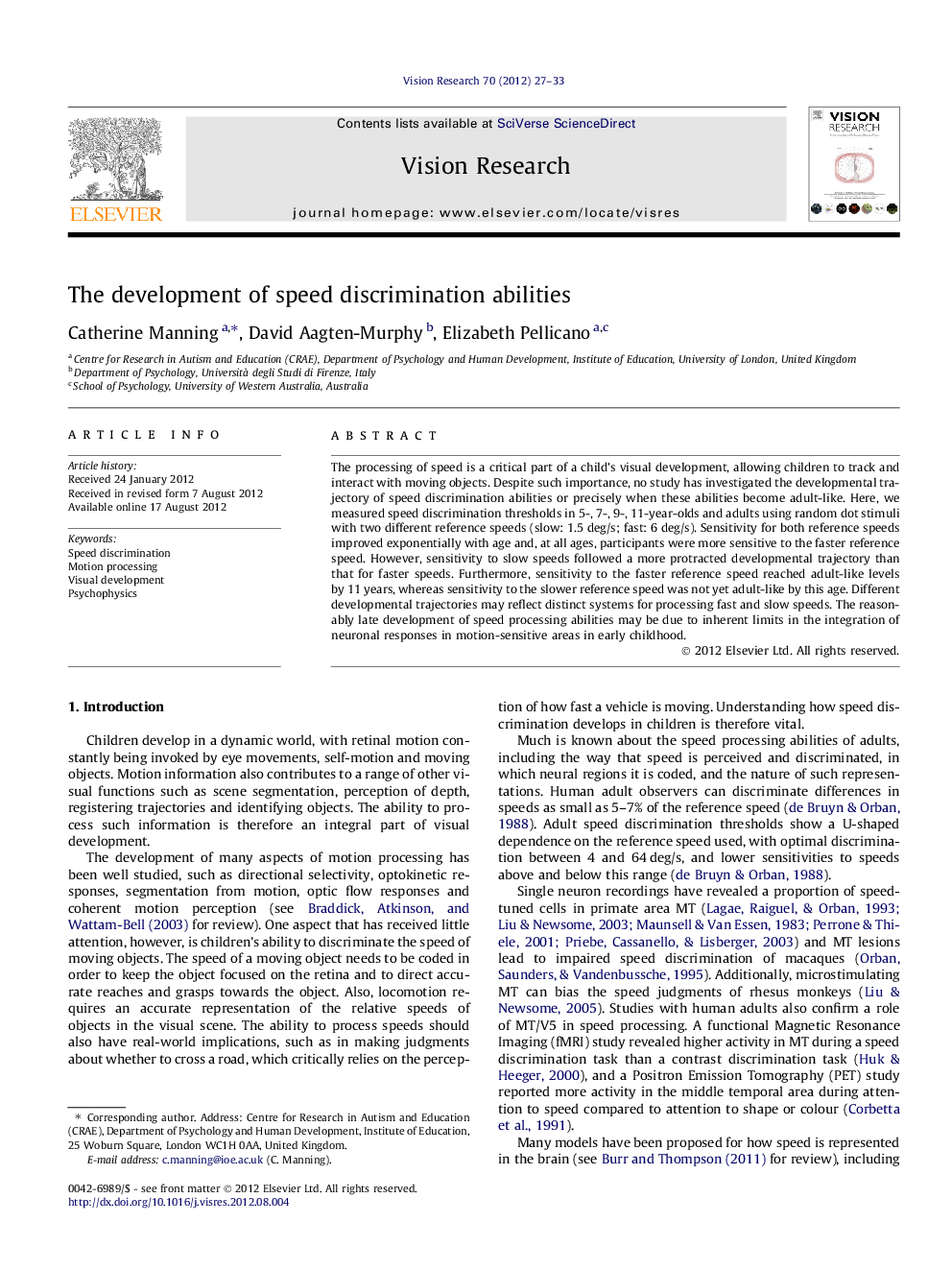| Article ID | Journal | Published Year | Pages | File Type |
|---|---|---|---|---|
| 4033895 | Vision Research | 2012 | 7 Pages |
The processing of speed is a critical part of a child’s visual development, allowing children to track and interact with moving objects. Despite such importance, no study has investigated the developmental trajectory of speed discrimination abilities or precisely when these abilities become adult-like. Here, we measured speed discrimination thresholds in 5-, 7-, 9-, 11-year-olds and adults using random dot stimuli with two different reference speeds (slow: 1.5 deg/s; fast: 6 deg/s). Sensitivity for both reference speeds improved exponentially with age and, at all ages, participants were more sensitive to the faster reference speed. However, sensitivity to slow speeds followed a more protracted developmental trajectory than that for faster speeds. Furthermore, sensitivity to the faster reference speed reached adult-like levels by 11 years, whereas sensitivity to the slower reference speed was not yet adult-like by this age. Different developmental trajectories may reflect distinct systems for processing fast and slow speeds. The reasonably late development of speed processing abilities may be due to inherent limits in the integration of neuronal responses in motion-sensitive areas in early childhood.
► We investigate for the first time the developmental trajectory of speed discrimination. ► Speed discrimination ability progresses gradually through childhood. ► Sensitivity to slow speeds develops more gradually than that to fast speeds. ► Sensitivity to fast speeds matures earlier, by 11 years. ► Understanding how speed processing emerges should critically inform adult models.
